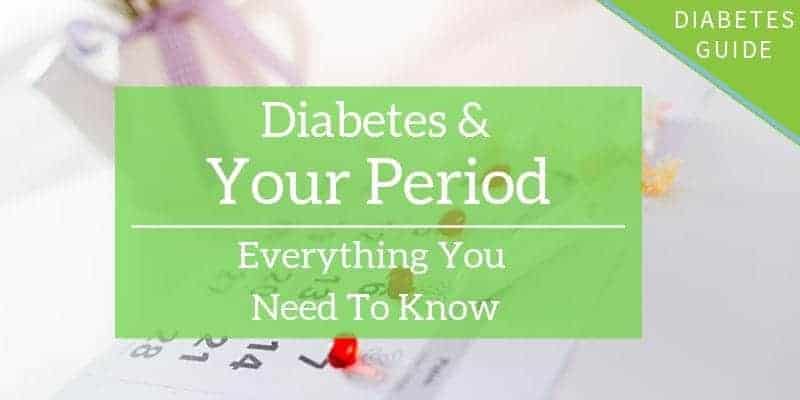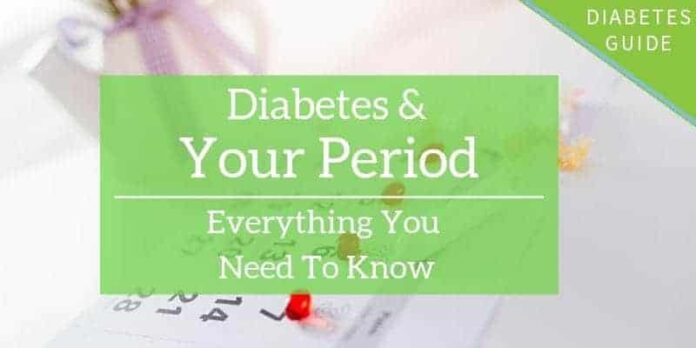Like so many different hormones produced by the human physique, the fluctuating hormone ranges of your menstruation cycle can have a big affect in your blood sugars and your insulin wants.
Sadly, the reproductive-related hormones within the feminine physique are very similar to a shifting goal. All through your 28-day cycle, your hormone ranges are altering, making it tough to foretell when and by how a lot chances are you’ll want to regulate your insulin doses to compensate.
On this article, we’ll cowl all the things you have to know as a way to higher handle your diabetes round your interval.
Diabetes & your interval
Whereas managing your blood sugar ranges round your menstrual cycle is rarely going to be a precise science, there are issues you are able to do and pay attention to that can make it a lot simpler.
The secret’s to test your blood sugar typically — particularly within the days proper earlier than your interval begins and through your interval — to pinpoint when your insulin doses will want the most important changes.
Let’s check out 8 points of menstruation to higher handle your blood sugar ranges throughout your interval.
There are 4 phases within the menstrual cycle and 4 main hormones impacting your diabetes
“Even when you find yourself not menstruating [bleeding] your physique’s hormone ranges are regularly altering every day because it prepares your physique for the potential of being pregnant,” ” explains Jennifer C. Smith, RD and CDE, and co-author of Being pregnant with Sort 1 Diabetes.
There are 4 phases that your physique cycles by:
- Menstruation (days 1 by 10): That is the beginning of your 28-day (on common) month-to-month cycle when your interval begins.
- Follicular part (days 11 by 14): Throughout this part, your physique is making ready for ovulation which is on the finish of this 2-week interval when your physique releases an egg for the intention of turning into pregnant. If you’re on contraception, your physique won’t launch an egg.
- Ovulatory part (days 15 to twenty): This part happens on the mid-point of your complete menstrual cycle. The dominant follicle hooked up to your uterus triggers a big spike of luteinizing hormone. This hormone is definitely produced by the mind. This part shouldn’t have a big affect in your blood sugar ranges.
- Luteal part (days 21 to twenty-eight): This part is straight away after your physique ovulates — which suggests it has launched an egg and continues till the beginning of your interval. The liner of your uterus will develop thicker throughout this part in preparation for being pregnant. While you don’t grow to be pregnant, that lining then sheds itself on the finish of the Luteal part which is, after all, what seems as blood and is the beginning of your interval.
There are 4 hormones that regulate your complete menstrual cycle:
- Progesterone
- Estrogen
- Luteinizing Hormone (LH)
- Follicle Stimulating Hormone (FSH)
This contains if you’re taking contraception as a result of these fluctuating hormone ranges play a crucial position in managing your complete well-being.
All of those hormones increase your blood sugar by creating insulin resistance, not a lot completely different from the way in which different non-reproductive hormones like cortisol have an effect on your blood sugars.
As a girl, you want these reproductive hormones for issues so simple as managing your urge for food, your coronary heart price, your pores and skin, the quantity of hair in your physique, your intercourse drive, vaginal lubrication, and your physique weight.
The primary day of your interval would be the most difficult
“Your 28-day cycle (though it may be longer for some folks) begins with the beginning of your interval,” explains Smith.
Most girls will see a big spike of their blood sugars on (or within the hours or day earlier than) the beginning of their interval. That is the results of elevated hormone ranges that allow your physique to shed the liner of your uterine wall (which is what seems as “blood” throughout your interval).
Smith says chances are you’ll must set a brief basal price with as a lot as 25 to 40 p.c improve in insulin that day. For these taking long-acting insulin, you’ll want to extend your basal insulin dose the day of or night time earlier than your interval by 25 to 40 p.c.
For instance, in case you take 10 models of Lantus on a regular day, you’d calculate 10 x 1.25 = 12.5. This implies I’d add 2.5 models to my long-acting insulin dose on the day of or the day earlier than my interval begins.
NOTE: After all, work together with your healthcare staff every time making new adjustments to your insulin dosing routine.
The tough half, after all, is that we’re not all the time constructive when our interval goes to start out. And also you don’t need to improve your basal insulin that considerably in case your physique doesn’t want it as a result of it could end in low blood sugar.
In case your interval isn’t extraordinarily constant and dependable by way of scheduling, you’ll doubtless want to attend till you expertise typical signs (cramping, and so forth.) or till you truly see that you’re bleeding earlier than shortly growing your doses.
Your insulin wants ought to return to regular the day after your interval begins
“That insulin resistance ought to return to your regular after the primary day of your interval,” explains Smith, which suggests you possibly can doubtless modify your insulin doses again to your regular quantities.
The rest of your precise interval (when you find yourself bleeding) ought to proceed to be pretty insignificant by way of blood sugar ranges and insulin resistance.
Throughout ovulation, your blood sugar and insulin resistance ranges could rise
“The ovulatory cycle can undoubtedly create some unpredictable excessive blood sugar ranges and insulin resistance,” explains Smith.
When your physique is making ready to launch an egg roughly 14 to 16 days after the beginning of your final interval, practically your whole hormone ranges rise shortly, creating a quick however vital spike in blood sugar ranges.
Much like the beginning of your interval, chances are you’ll want a 25 to 40 p.c improve in your background insulin doses.
Fortuitously, this cumbersome part solely lasts for so long as 2 to three days in most ladies. That being stated, it’s nonetheless very laborious to pinpoint and predict, which suggests you’ll must maintain a detailed eye in your menstruation calendar.
If you happen to can match up your sudden excessive blood sugars with the times on the calendar throughout which your physique is making ready for ovulation, you’ll really feel far much less pissed off with these seemingly irrational excessive blood sugars.
It’s possible you’ll be extra insulin-resistant through the few days earlier than your subsequent interval
As your physique prepares to your subsequent interval, chances are you’ll discover a little bit of insulin resistance throughout the previous few days earlier than it begins.
Some ladies might even see insulin resistance throughout the whole week earlier than the beginning of their interval, and others could not discover any insulin resistance or cussed excessive blood sugar ranges in any respect.
Use a interval tracker app to assist handle diabetes round your interval
There are such a lot of free interval monitoring (or “interval calendar”) apps nowadays. All of them serve the identical objective: that will help you pinpoint when your physique is most probably ovulating and when your interval goes to start out.
Often, a younger or grown lady doesn’t want to trace her ovulation and menstrual calendar this carefully till she’s making an attempt to get pregnant. For ladies with diabetes, it serves a completely completely different objective and may be very useful.
The extra persistently you employ it, the extra correct the knowledge might be which can provide help to anticipate these tedious blood sugar fluctuations, too.
Open your “Apps Retailer” utility in your smartphone (or use Google for one to make use of in your pc), and select any of the highest few free outcomes. It’s going to doubtless assume your menstrual cycle is 28 days from begin to end (the beginning of your interval till the day earlier than your subsequent interval).
If you happen to monitor your interval persistently for 3 months, you possibly can see in case your physique certainly follows a 28-day cycle or if it’s probably somewhat longer. Then modify the settings within the app (for instance altering a 28-day cycle to a 30-day cycle).
If you happen to discover your cycle is longer than 35 days, inform your healthcare staff instantly as this could be a signal of different issues.
Be affected person — it’s practically unimaginable to juggle your insulin wants round these hormones completely
“Be affected person,” Smith encourages. “If you happen to can determine patterns in your blood sugar ranges and insulin wants based mostly in your menstrual calendar, that’s nice. If not, do the perfect you possibly can to react shortly if you do discover your blood sugars are extra resistant and working increased.”
And naturally, take good notes! If you happen to elevated your basal price or long-acting insulin dose from 14 models to 18 models final month — and it labored nicely to your blood sugar objectives — remember to write that down so you possibly can consult with it subsequent month!
Managing diabetes is by no means simple and it’s by no means good. Take a deep breath, do the perfect you possibly can, and by no means cease making an attempt to be taught extra about your physique’s wants as an individual with diabetes.


